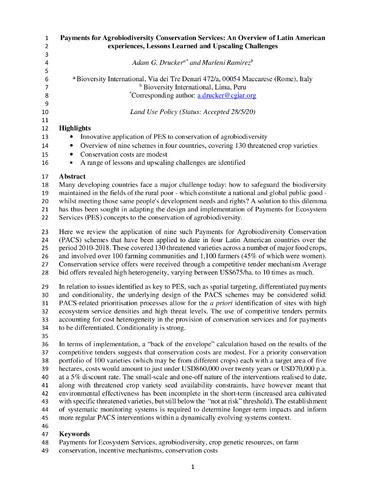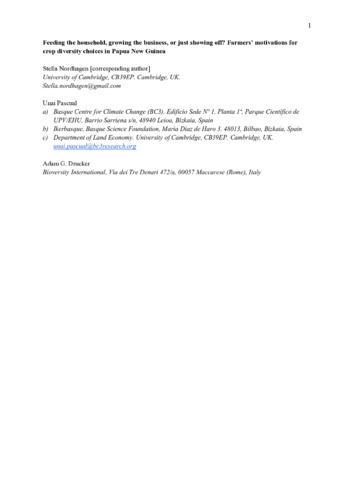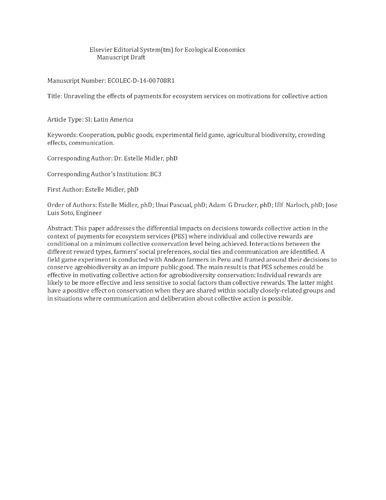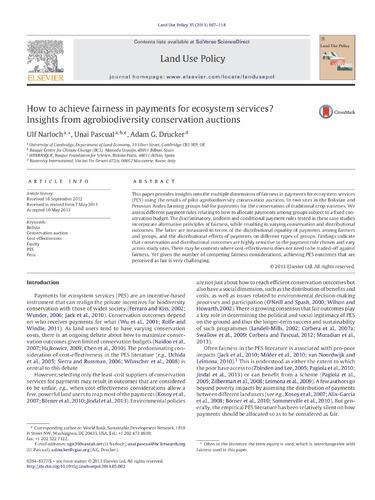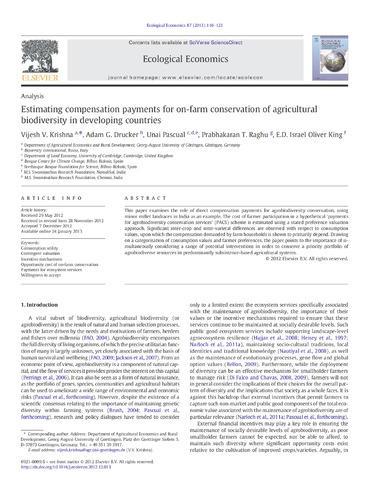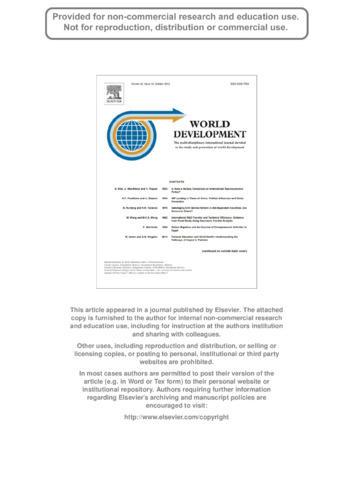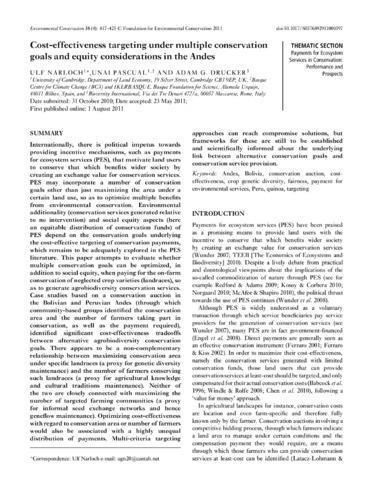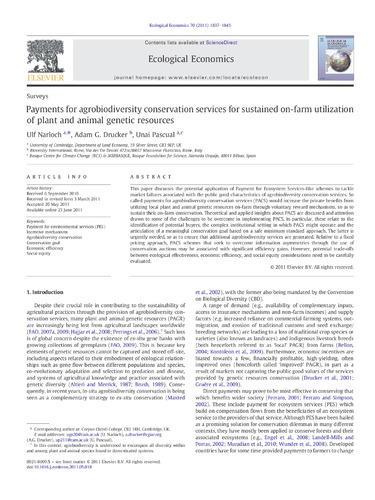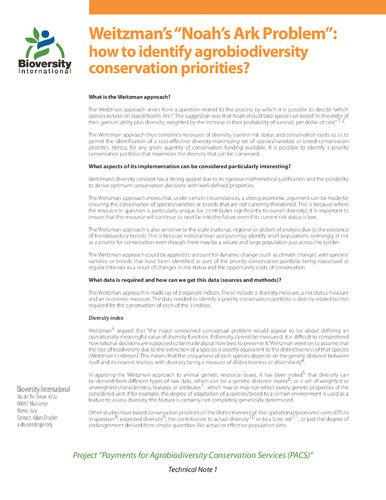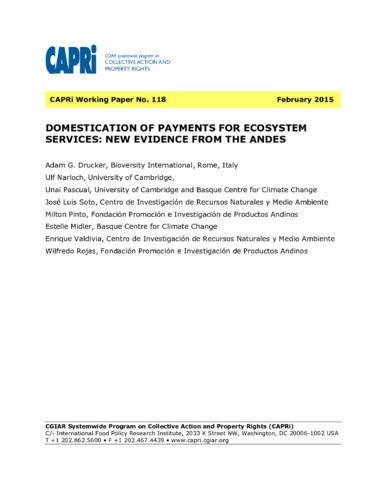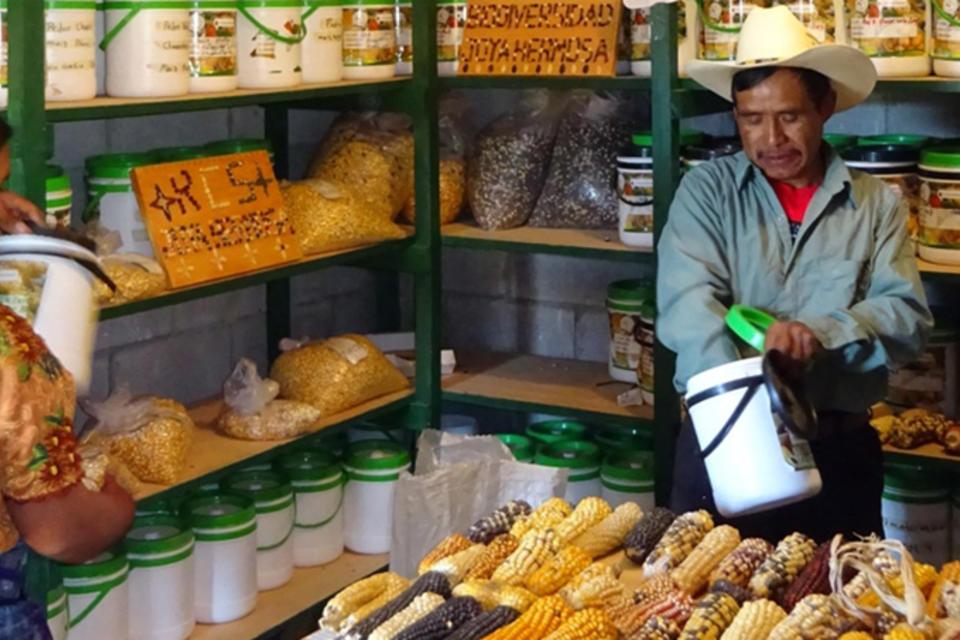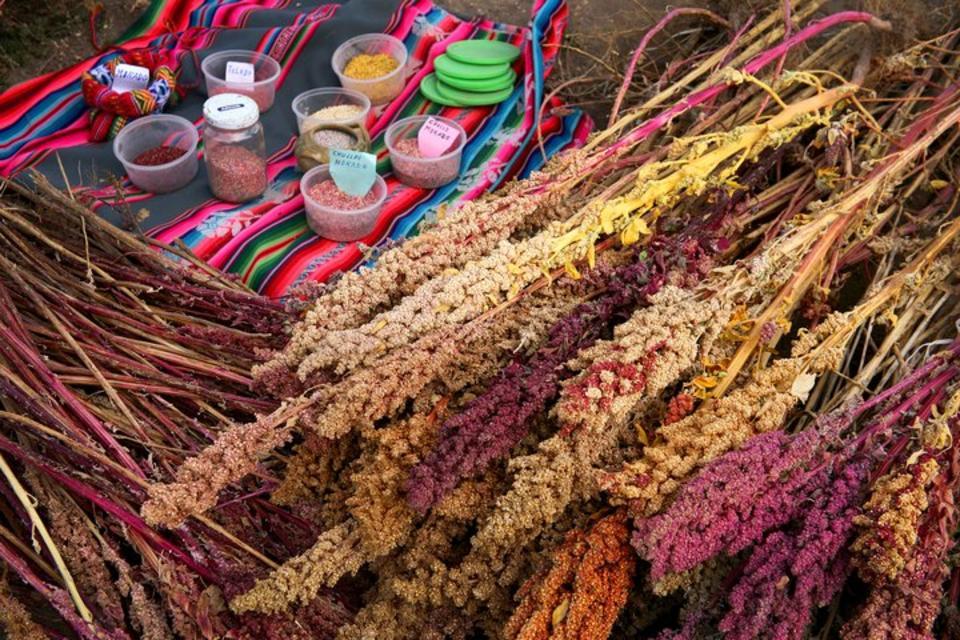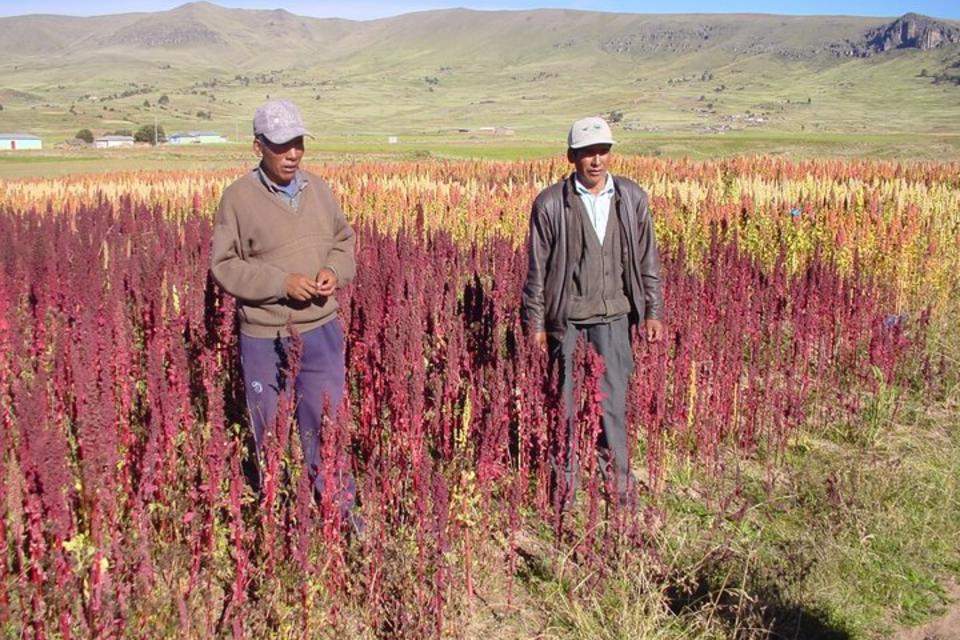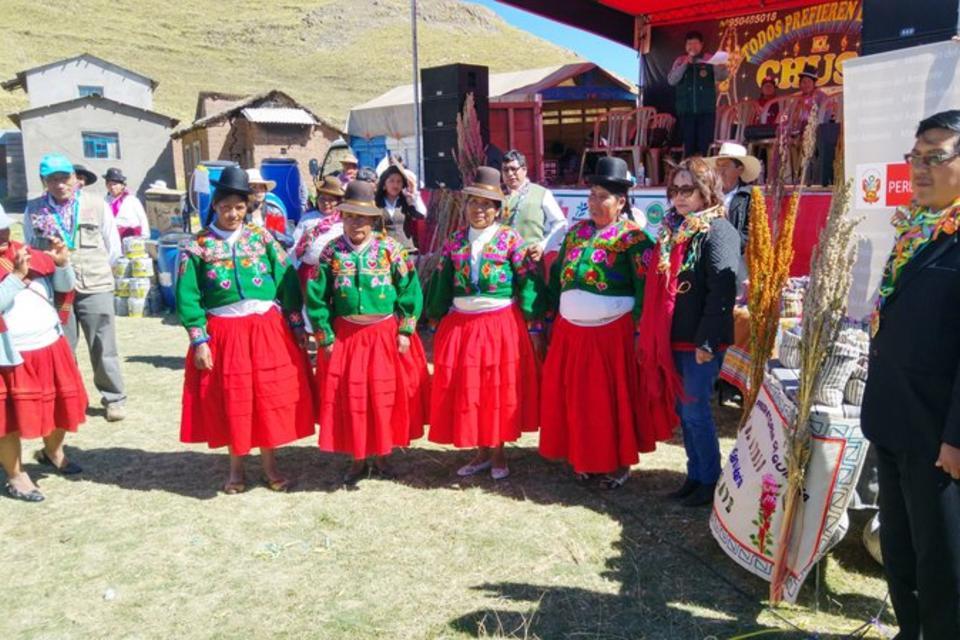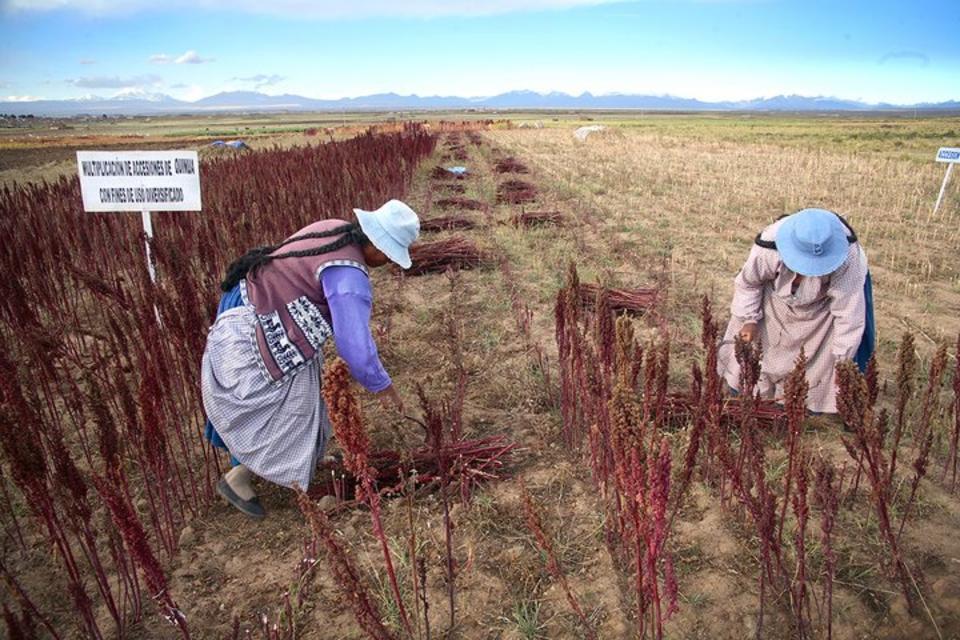Payments for Agrobiodiversity Conservation Services (PACS)

Payments for Agrobiodiversity Conservation Services (PACS) is an incentive mechanism that focuses on threatened plant and animal genetic resources with high public good values (e.g. food security, climate change, biodiversity).
PACS provides incentives to farmers for in situ/on-farm agrobiodiversity conservation. It also covers a wide range of conservation and use management topics, such as: prioritization, conservation target setting, facilitating access to threatened variety seed, accounting for social equity monitoring and facilitating value chain development.
Farmers are rewarded for providing a conservation service for the benefit of the nation and the world. PACS provides a mechanism for ensuring farmers’ rights and the fair and equitable sharing of the benefits of genetic resource conservation and use (as per the Convention on Biological Diversity, International Treaty for Plant Genetic Resources for Food and Agriculture, the Sustainable Development Goals and national legislation).
PACS also has a social equity aspect. Groups define the conditions for their participation conditions (i.e., which priority species/varieties to cultivate from a given portfolio, kind and level of reward needed to cover their opportunity cost, which farmers participate). The project can then choose groups based on both conservation and social equity goals.
Incentives for farmers to conserve agricultural biodiversity for the public good
In what context is this tool useful?
PACS is useful where stakeholders are seeking options to manage genetic resources better.
Results achieved
Since 2010, PACS has:
• Worked with over 180 threatened crop varieties
• Benefited over 155 communities and 1,600 farmers (at least 4 out of 10 women)
Data from Puno, Peru (the longest PACS panel data set available) indicate the effectiveness of PACS in reducing genetic resource risk status. Five out of seven targeted at-risk varieties reached their conservation goal after ten years.
High farmer satisfaction with their participation in PACS schemes have led them to maintain priority varieties even in the absence of further incentive payments, suggesting that re-interventions, where needed at all, may only be required every 5-10 years.
The costs of conservation are significantly lower than the costs that the public are willing to pay:
Drawing on quinoa-related PACS work in Puno, Peru, Drucker and Ramirez (2020, p7) developed a model for estimating the costs of implementing in situ/on-farm crop diversity conservation programs. Adapting that model to cover 2,700 quinoa varieties over 50 years results in a cost of US$19.75m or US$1.08m p.a. at a standard 5% discount rate (equivalent to US$0.32 per household). This reflects the preferences of the survey participants to ensure the conservation over that period of 90% of the approximately 3,000 varieties in existence in Peru.
Variations on this method
PACS has also been applied beyond threatened crop varieties. Interventions are currently (2020-21) taking place in Tanzania and Malawi in the context of crop wild relatives (CWR); while PACS-related surveys that did not involve subsequent conservation interventions have also taken place in Zambia (CWR), as well as in Slovenia (livestock breeds).
PACS can be more effective when part of a platform of conservation interventions, for example value chain interventions. As a result of the PACS 2015-2016 intervention, Kai Pacha Foods (www.kaipachafoods.com) began buying White Chullpi to make quinoa milk in 2016. In 2017, contracts for Orange Chullpi were also established as its grains are larger and found to give a better texture to the product. Kai Pacha Foods purchases have since continued and in 2021 the community and cooperative involved had a contract for 23 hectares of the Chullpis, with the aim of producing more than 20 tonnes.
How PACS works?
Publications
- Overview: Payments for Agrobiodiversity Conservation Services (PACS): project dissemination overview
- Policy brief 1: Payment for agrobiodiversity conservation services (PACS): policy intervention strategies
- Payments for Agrobiodiversity Conservation Services (PACS): Current status and implications for a re-introduction of colored Kiwicha (Amaranth) in Cusco, Peru
- Payments for Agrobiodiversity Conservation Services and the Seed Access Challenge: What role for (community) seed banks in Peru?
- Payments for Agrobiodiversity Conservation Services (PACS): Current status and implications for the conservation of threatened varieties of quinoa in Puno, Peru
- Payments for agrobiodiversity conservation services: An overview of Latin American experiences, lessons learned and upscaling challenges
Journal Articles
